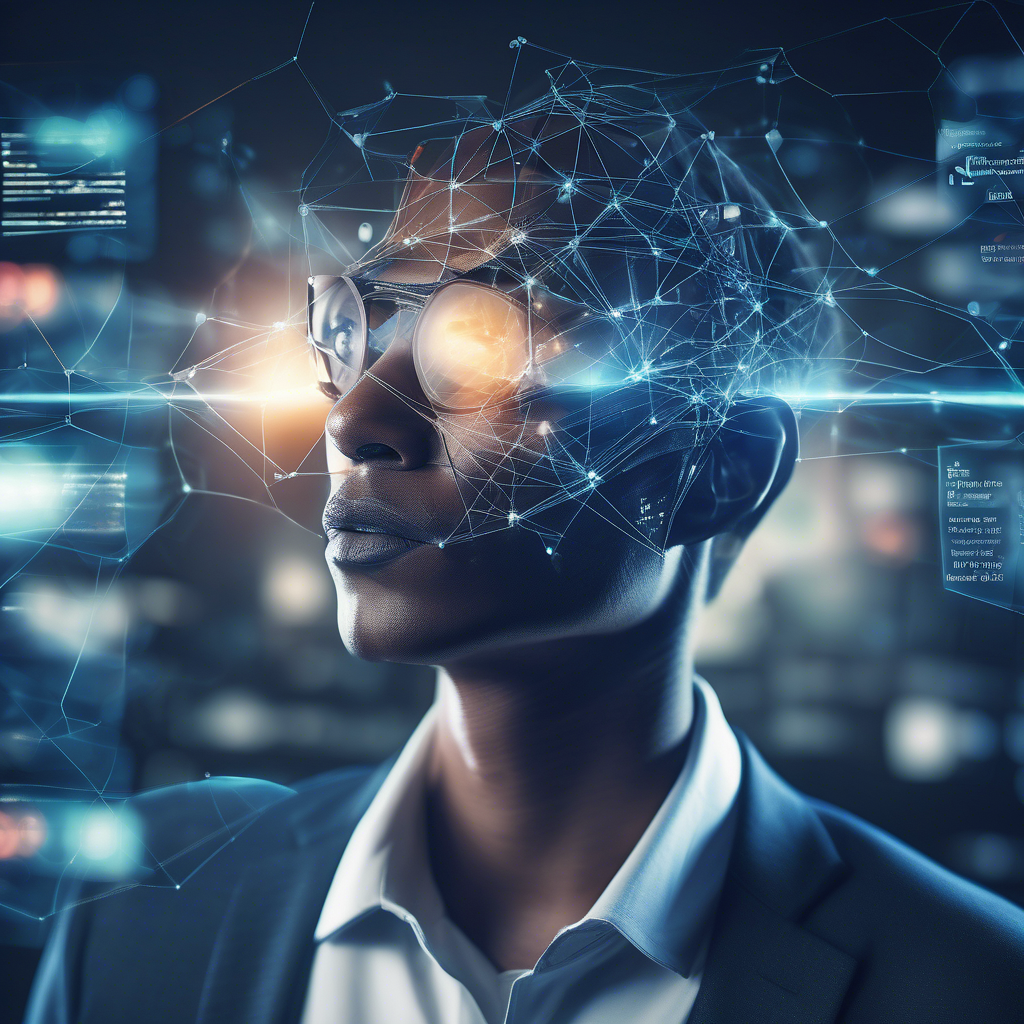The Future of Web 4.0: Decentralized Internet in 2025
Imagine this: it’s 2025, and the internet as we know it has taken a radical turn. Remember those futuristic movies where everyone’s privacy is paramount, and centralized control is a thing of the past? Well, we’re almost there. The Web 4.0 revolution’s upon us, and it’s changing how we interact with technology, especially by weaving the threads of decentralization deeper into the fabric of our daily digital lives.

In a world where AI technologies are reshaping the business landscape, the shift towards decentralized internet, or Web 4.0 as some tech pundits dub it, is akin to moving from horse-drawn carriages to electric cars. You know, the kind of leap that feels both exhilarating and daunting? We’re diving headfirst into an era where blockchain technology isn’t just for cryptocurrencies anymore. It’s now the backbone of our online interactions, promising a layer of security and personal control that we’ve only dreamed about.
But what does all this mean for you and me? How will the future of web technology influence our daily lives or even the very businesses that keep the world turning? Let’s take a closer look at how Web 4.0 is set to redefine our digital realm by 2025.
The Core of Decentralization: Blockchain and Beyond
When most people hear “blockchain,” they think of Bitcoin or Ethereum. But blockchain is so much more than just digital currency. It’s a digital ledger, a system that records information in a way that’s nearly impossible to modify. In the context of Web 4.0, blockchain provides the scaffolding for a decentralized internet, allowing for unprecedented levels of user control over personal data.
Blockchain’s Role in Web 4.0
By 2025, blockchain technology will be embedded in various aspects of the internet, from data storage to identity verification. Imagine, for instance, a world where your online identity isn’t governed by tech giants but by a blockchain-based passport. It’s an intriguing prospect, isn’t it? This decentralized approach not only enhances security but also empowers users by giving them more control over their data.
Practical Applications in Everyday Life
Let’s bring this down to earth. Say you’re shopping online. Instead of handing your credit card info to a retailer, a blockchain transaction could verify your payment without exposing your details. Or consider social media: instead of platforms owning your content, you could retain ownership of every post, every photo. It’s like having a personal vault that only you can open. Pretty nifty, right?
| Web 3.0 | Web 4.0 |
|---|---|
| Centralized data control | Decentralized data networks |
| Platform-centric identity | User-centric identity |
| Data monetized by platforms | Data monetized by individuals |
Such innovations could fundamentally alter various industries, from finance to healthcare. We’re talking about a paradigm shift where the balance of power swings back towards the individual. And isn’t that a change we’d all welcome?
AI and the Automation Frontier
Ah, AI—everyone’s favorite buzzword. But in the context of Web 4.0, AI isn’t just about predictive text or chatbots. It’s the driving force behind business automation, revolutionizing how companies operate. By 2025, AI’s role in automating business processes will have expanded to levels we can barely conceptualize right now.
How AI is Shaping Business Automation
The future of AI in business automation isn’t just about replacing mundane tasks with algorithms. It’s about enhancing human capabilities. Think of AI as the ultimate sidekick, handling data analysis, customer service, and even creative tasks like content generation. Businesses are already leveraging AI to optimize supply chains, predict consumer behavior, and even fine-tune their marketing strategies.
Practical Examples of AI Technologies Transforming Businesses
Take a look at Tesla’s autonomous vehicles or Amazon’s predictive inventory systems. These aren’t just gimmicks; they’re real-world examples of AI changing the business landscape. By 2025, you might have an AI assistant that not only schedules your meetings but predicts the best time to hold them based on your team’s productivity patterns. Sounds like science fiction? Well, we’re inching closer to making it a reality.
But how does this tie back to the decentralized internet? Well, as AI algorithms become more sophisticated, the need for robust and secure data systems becomes pressing. Blockchain and decentralized networks offer a solution, enabling AI systems to access and process data without compromising privacy or security. It’s a marriage made in tech heaven.
Challenges on the Road to Web 4.0
Of course, no technological evolution comes without its hiccups and hurdles. Decentralization, despite its promises, isn’t all smooth sailing. The road to Web 4.0 is peppered with challenges that need addressing before we can fully realize its potential.
Scalability and Integration Issues
For one, there’s the issue of scalability. Decentralized networks, while secure and private, often struggle with speed and efficiency. Imagine trying to stream a movie on a network that takes ages to load. Not exactly user-friendly, right? Integrating blockchain with existing systems can be like trying to fit a square peg into a round hole. It’s not impossible, but it requires finesse and innovation.
Regulatory and Ethical Considerations
Then there are the regulatory and ethical hurdles. How do we ensure that decentralized systems aren’t used for illicit activities? And how do we regulate systems that, by design, resist central control? These are questions that policymakers and tech developers alike are grappling with. The answers aren’t clear-cut and will require a balanced approach that protects users without stifling innovation.
What’s more, there’s a learning curve. For the average user, understanding how to navigate a decentralized internet can be daunting. But, as with the adoption of any new tech, education and accessibility will be key in smoothing the transition. Remember when smartphones first came out and everyone struggled with touchscreens? We managed to adapt, and we’ll do it again with Web 4.0.
FAQ
What is Web 4.0?
Web 4.0, often dubbed the “decentralized internet,” refers to the next generation of internet technologies focused on decentralization and enhanced user control. It’s characterized by blockchain integration, greater privacy, and AI-driven automation. The idea is to shift power from centralized entities to individual users, enabling more secure and private interactions online.
How will Web 4.0 affect data privacy?
Web 4.0 aims to revolutionize data privacy by utilizing decentralized systems like blockchain. This means your data isn’t stored in massive centralized databases but distributed across a network. It enhances privacy by allowing users to maintain control over their information. Imagine having a digital lockbox that only you can access, instead of trusting a third party to keep it safe.
What are some real-world applications of Web 4.0?
Real-world applications of Web 4.0 are vast and varied. They include decentralized finance (DeFi) platforms that allow for direct peer-to-peer financial transactions without intermediaries, social media platforms where users own their content, and blockchain-based identity systems. These applications promise to enhance autonomy and security in our digital interactions.
What challenges does Web 4.0 face?
Web 4.0 faces several challenges, including scalability issues, regulatory hurdles, and the need for widespread user education. Integrating decentralized systems into existing infrastructures requires significant innovation. Moreover, ensuring these systems are not exploited for illicit purposes while maintaining user autonomy is a delicate balancing act that developers and legislators must navigate.
How is AI integrated into Web 4.0?
AI is a cornerstone of Web 4.0, driving automation and personalization of online experiences. It enhances data processing efficiency and enables smarter decision-making by businesses. Moreover, AI’s integration with decentralized systems ensures that data privacy is maintained while allowing for advanced AI functionalities, offering a synergy that could redefine how we use technology.
Conclusion: Embracing the Digital Future
As we stand on the brink of this digital renaissance, it’s clear that Web 4.0 is more than just a technological upgrade—it’s a philosophical shift in how we perceive and interact with the internet. With decentralization at its core, this new wave promises to empower users, protect privacy, and foster innovation in ways we’ve yet to fully envision.
But, like any pioneering journey, it demands a collective effort from tech developers, policymakers, and users alike. Embracing this change means being open to learning, adapting, and sometimes even redefining our digital habits. It’s not just about waiting for the future of web technology to unfold; it’s about actively participating in its creation.
So, as we navigate this uncharted territory, let’s do so with curiosity and optimism. After all, the future of the internet in 2025 isn’t just about new tools and systems—it’s about redefining the digital world and our place within it. Ready to take the plunge?







